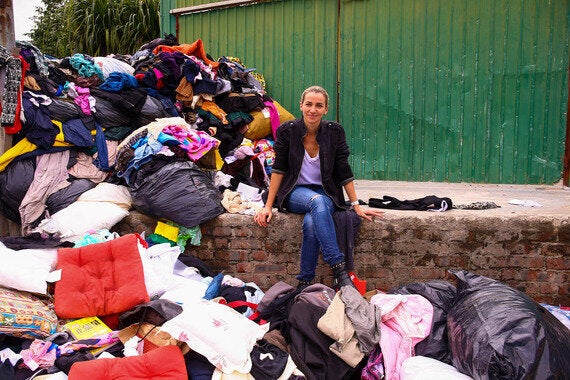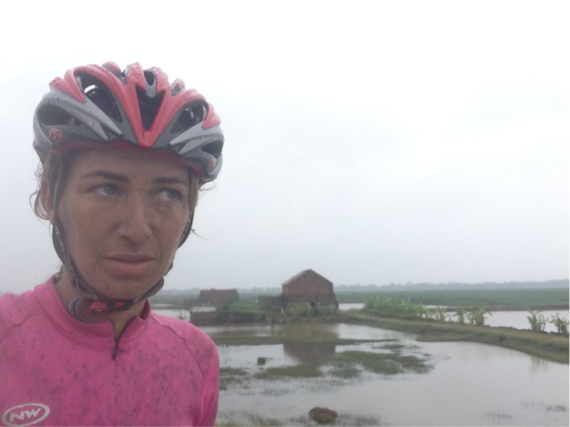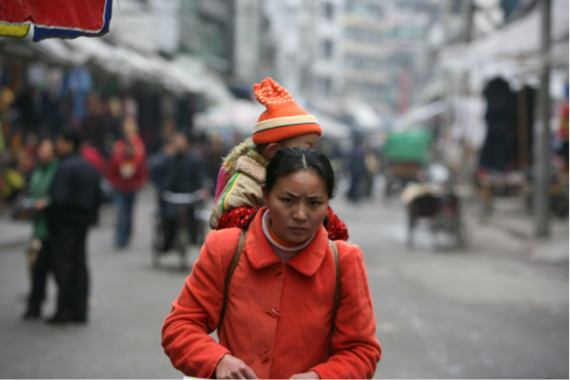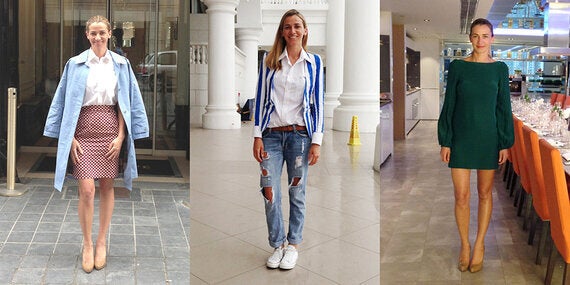I never thought that my move from London's Chelsea to living on China's doorstep 11 years ago would result in a complete fashion and ethical overhaul. But unexpectedly my move to live beside the world's clothing factory gave me fashion whiplash; I swapped my previously relatively comatose approach to clothes shopping - most Westerner's ethical pulse rarely raises a blip at the high street counter - to become an ardent sustainable fashionista, of sorts. My move also gave me professional whiplash; I went from being a dental surgeon - more interested in fillings than fibers - to becoming a journalist - where I used words as my currency to talk about wardrobes - and then, due to the enormity of the problems I continued to encounter here in Asia, I put down both my drills and my pens to start Redress, the NGO with a mission to reduce waste in the fashion industry.

Redress, reducing waste in the fashion industry. Photo: Redress
Unlike what most people may expect, living beside China did a lot for my ethics. You can truly smell the coffee when your lungs share the air with a country that, when I moved here, housed 16 of the planet's 20 most air polluted cities. Living here, the veil truly lifted on the fashion industry - now the world's second most polluting industry - and my clothing's back-story and the who, what, where and how my clothes were being made became painfully clear.
But it was an adventurous bike ride that sealed the deal on my new Chinese-imposed ethical values and changed the way I dress, forever. I cycled 1,200km from my back door through China's expansive southern manufacturing hinterland, sweatily peddling my way for 10 non-stop hours every day past gigantic factories that enable China to export 37 per cent of the world's textiles and 39 per cent of the world's clothes today. Seeing is believing and my bike ride unblocked some of my emotional and intellectual blind spots towards clothes; which are otherwise so prevalent amongst Western consumers.

Seeing is believing: 61 per cent of China's groundwater is classified as 'unfit' for human contact. Photo: Christina Dean
Like it or not, but China is still a major manufacturer. But the country and her people pay a steep price for this. Sixty one per cent of China's groundwater is classified as 'unfit' for human contact by China's Ministry of Environment; 190 million people in China fall ill and 60,000 people die every year from diseases caused by water pollution, of which the textile industry is a major contributor; and cancer rates are reported higher amongst people living near polluted rivers. China's people, as I would witness from over my handlebars, are as financially distant from any decent medical care as they are from affording to wear any of the clothes that they make.
But what struck me as I peddled through city after city, each offering a kaleidoscope view into how our clothes, textiles, tiles, electronics to even our door knobs are made, is how disconnected Western people are with the impact of our consumption on communities around the world. I passed hundreds and hundreds of kilometers of damaged environment - take your pick from the constant grey, smoggy skies, brown to red coloured rivers, piles of that season's coloured cut-and-sew waste dumped down alleys or into riverbeds. I passed countless saddened, cracked and grey faces belonging to people who busily - and almost robotically - hurried along their way. What's hard to feel from the West's ivory tower is that these people are just like us. They share our aspirations and our needs; and no doubt those I passed felt pressured to put good food - increasingly hard to find in China where almost one fifth of China's soil is heavily contaminated - on the table and to provide opportunities for their children.

A familiar parental feeling; simply wanting the best for our children. Photo: Tony Yeung
That's why China let altruism out of my closet. Every time we buy clothes, we are peddling a polluting cycle elsewhere in the world that someone is paying for. And whilst I've yet to hop on my bike in India, where pollution rates are also hitting the roof, if I did I would likely find a similar scenario; India is the world's third biggest textile exporter and according to recent reports the rise in India's textile production is mirrored by a rise in cancer.
But let's get back to China. What's almost more worrying is that I don't have to jump on my bike to see what's going on. I can breathe it. China's air pollution is so bad - about 1.6 million Chinese are killed by breathing bad air every year - that my three children are regularly forced to stay inside all day at school, leaving classrooms choked, playgrounds empty and sports fixtures cancelled. This toxic footprint in their lungs will last forever, as an ugly reminder of their parents' choice of nurturing home. And then from the comfort of my own home, which overlooks one of the world's busiest shipping lanes, I am constantly reminded of our world's extraordinary high consumption rates.
That's why my closet - and my conscience - will never be the same again. My experiences living near the factories that may have made your clothes changed the way I dress and gave my ethical pulse a much-needed shot of adrenalin. Except for my underwear and shoes, I've made a lifelong commitment never to buy anything made using new - aka virgin - fibres so as to reduce my directly controlled waste footprint and to divert my cash into economies that deliver better products. I'm four years in and I have never looked back.
My closet mainly contains secondhand (or thirdhand - who's counting?) clothes, the nirvana of sustainable fashion as secondhand clothes obviously reduce waste and also help to stimulate enterprises involved in the circular economy. My secondhand Marni to Mango pieces are helping to create more demand for reuse - to keep clothes in the fashion loop - before recycling into lower grade materials. My closet also includes a smattering of clothes created using textile-waste reducing materials and methods; some are made using recycled fibres or from up-cycled fabric waste. The beauty of buying recycled textile clothes or up-cycled clothes that I'm still buying 'new' and am therefore still contributing my pound of flesh to the economy. Don't be fooled by those who say that more conscious consumption - through buying more sustainable fashion - will cause the economy to crash. Instead, I believe, we can put our money where my mouth is and buy from designers and brands that are innovating to reduce waste.

Follow Christina's journey on Instagram. Photos: Redress
My journey, both on and off the bike, has shown me that a more sustainable fashion industry is completely possible. Through Redress, I have worked with passionate young designers from around Asia and Europe and pioneering industry professionals who are proving that there is a better path forward for fashion. It all starts with a revolution in values, which starts with letting altruism out of the closet.
REFERENCE
World Bank 2005
World Trade Organization (2016). World Trade Statistical Review 2016
Ministry of Environment (2015), 2015 State of Environment Report; China Water Risk (2016), 2015 State of Environment Report Review
Qiu J. (2011), Environmental Science. China to spend billions cleaning up groundwater; Nature (2014), Public health: A sustainable plan for China's drinking water
China Water Risk (2016), China's Soil Ten
Singh Z. (2014) Cancer Occurrence Among Textile Industry Workers: Vital Statistics
Brauer M, Freedman G, Frostad J, van Donkelaar A, Martin RV, Dentener F, Van Dingenen R, Estep K, Amini H, Apte JS, Balakrishnan K, Barregard L, Broday DM, Feigin V, Ghosh S, Hopke PK, Knibbs LD, Kokubo Y, Liu Y, Ma S, Morawska L, Sangrador JLT, Shaddick G, Anderson HR, Vos T, Forouzanfar MH, Burnett RT, Cohen A. (2015) Ambient air pollution exposure estimation for the Global Burden of Disease 2013.
This post is part of our "Reclaim" initiative, which showcases solutions to the issue of fashion waste and engages our readers to take action. You can find all the posts in this initiative, as well as feature pieces, investigative stories and video, here. Follow the initiative on Twitter at #Reclaim.